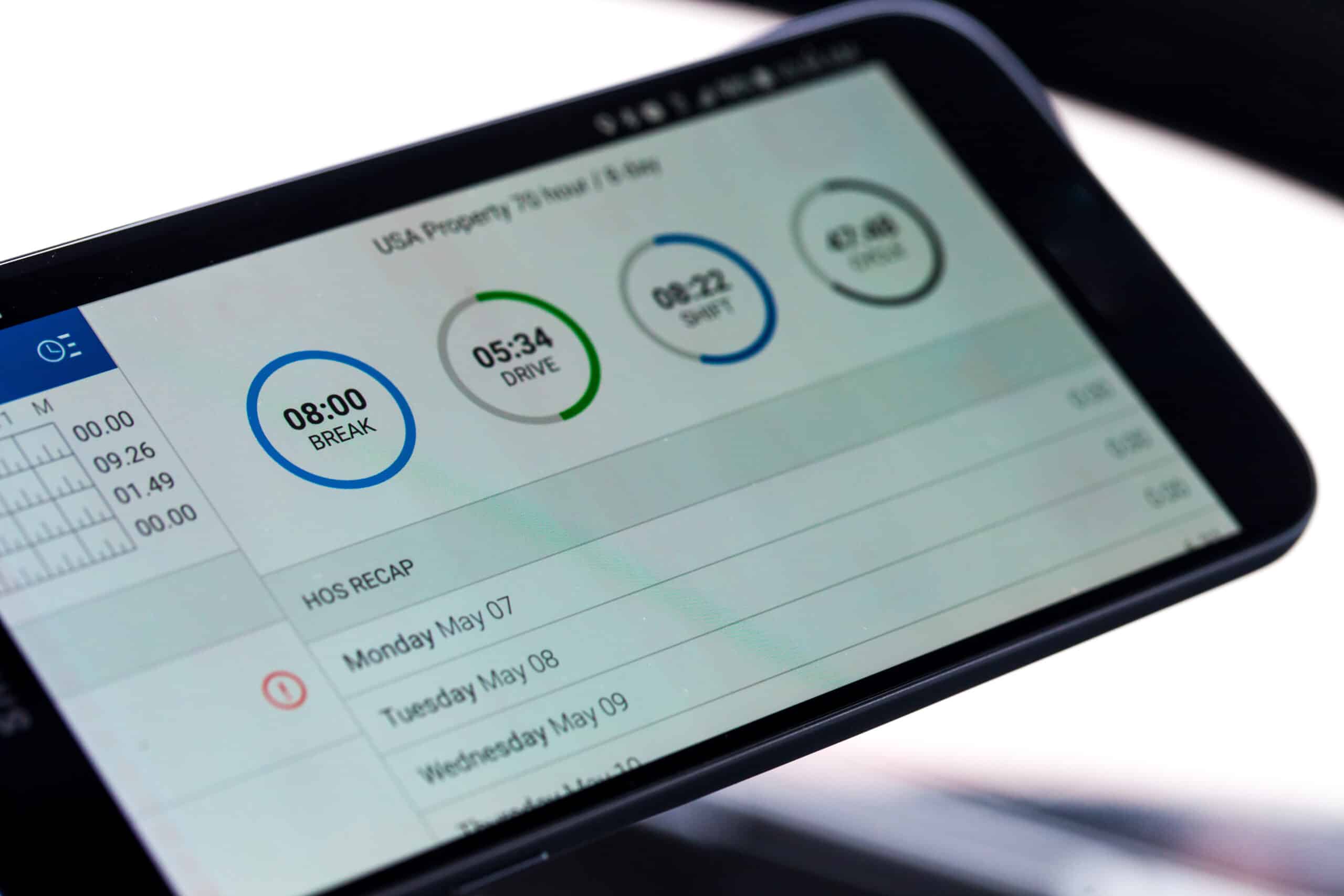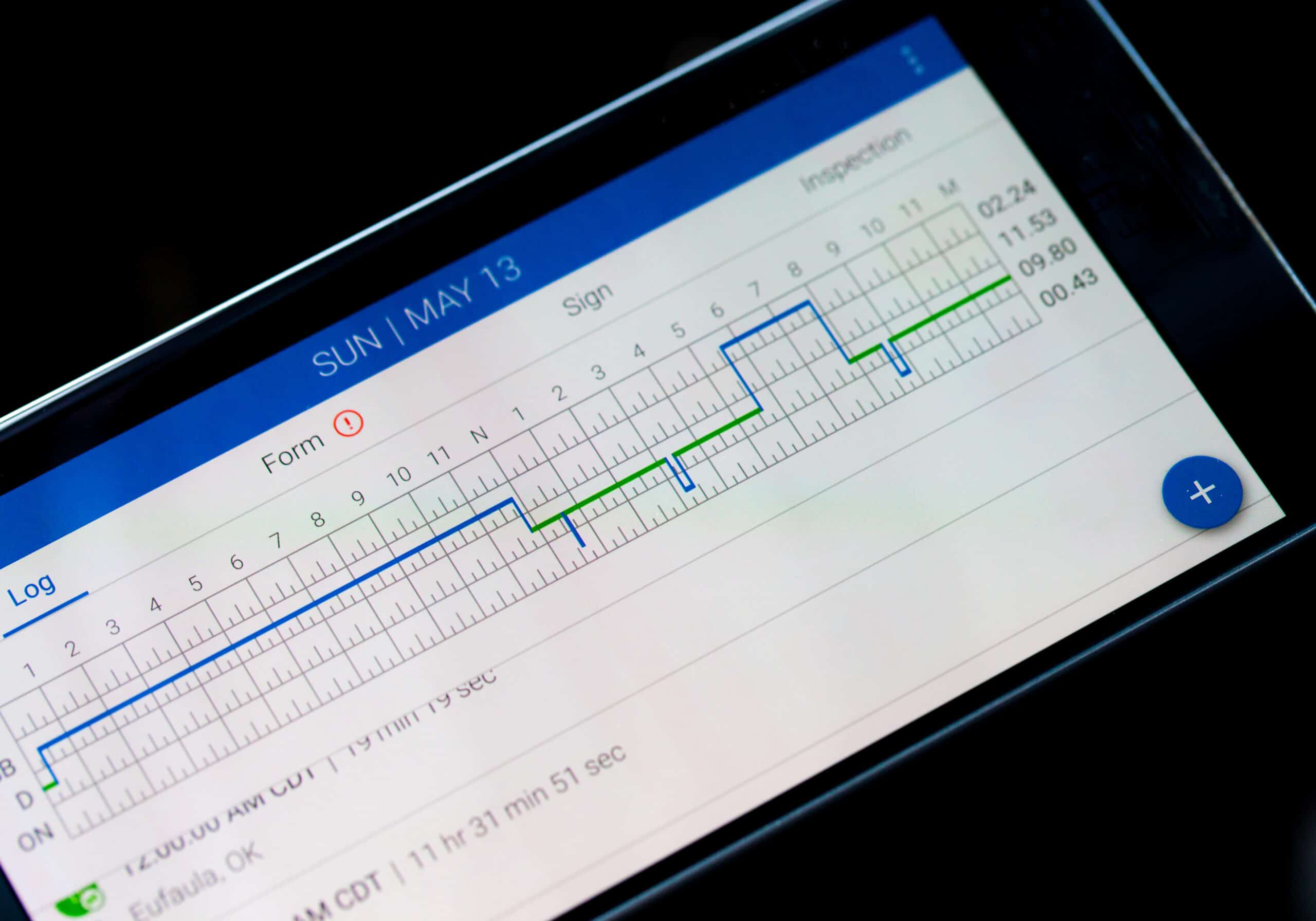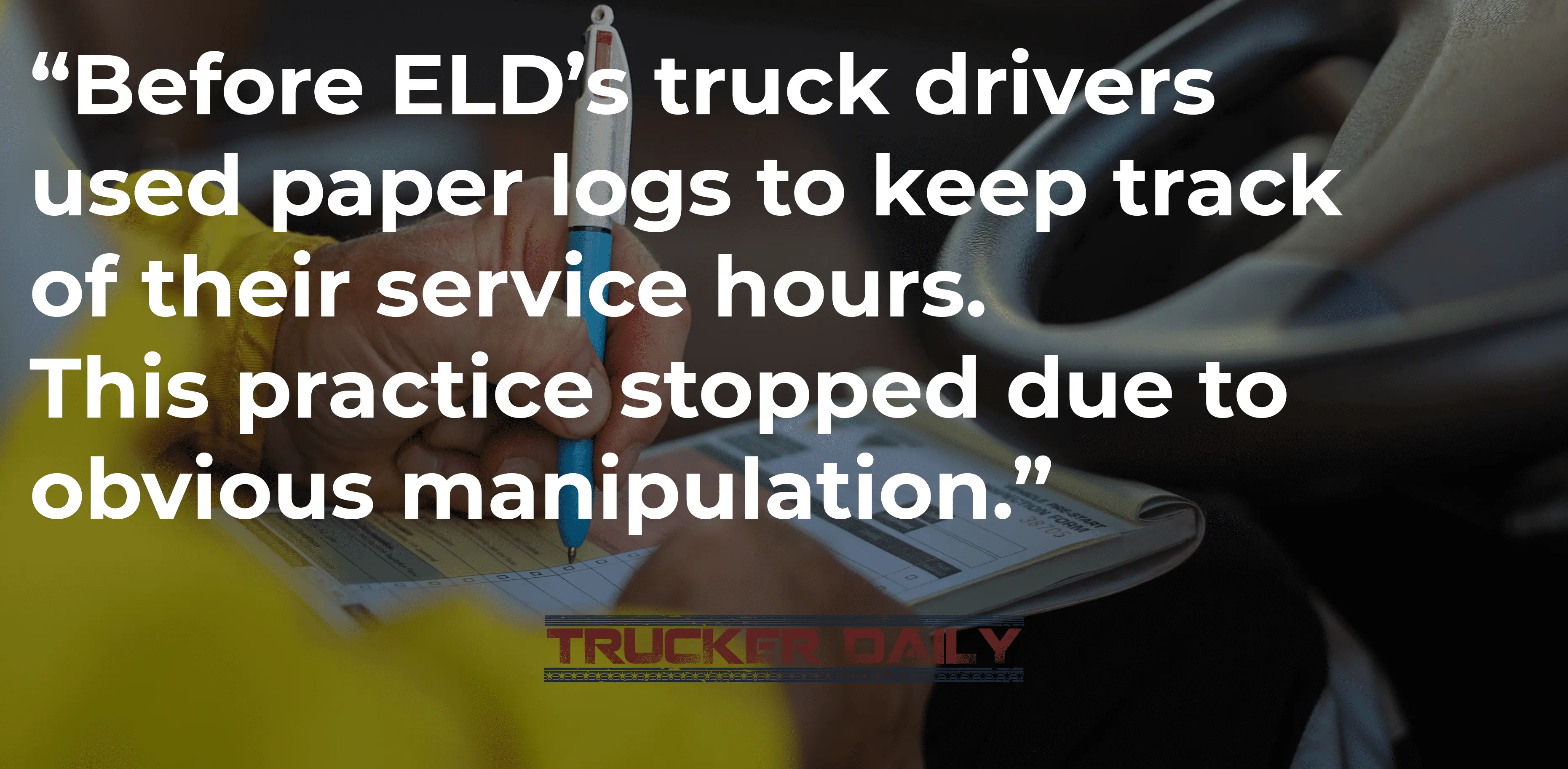Driving long distances might be a rare occasion for you, but for truck drivers, its an every day routine. If you’ve ever been on a long road trip you might understand the challenges that might come with it. Most reported vehicle crashes are caused by fatigued drivers. This is why the Federal Motor Carrier Safety Administration (FMCSA) implemented certain regulations on hours-of-service. These also include restrictions and exceptions. In other words, there are strict rules surrounding how many hours a truck driver is able to work.
A driver can work for a maximum of 14 hours per day, but only 11 hours of these can be spent driving. These limits reduce the risk of accidents to other drivers and civilians by preventing drivers from experiencing fatigue behind the wheel.
What Are the Hours of Service Rules?
The distances covered by truck drivers can be insane, even on a daily basis. Picking up cargo and delivering can be exhausting work. Especially if it involves interstate travel. However, truck driving is a large part of the US economy’s backbone.
That’s the reason why there are regulations set in place for all commercial truck drivers. Overworked drivers pose danger to everyone driving alongside them on the road. These regulations include restrictions on hours, required breaks, and penalties that can be given.

Electronic logging device for trucking industry with hours of service displayed on smarthphone screen
There are limits to a driver’s daily hours. These are referred to as the hours of service rules, which includes the following:
- How long a driver can be behind the wheel
- How long a driver should work in specific time periods
- How long a driver should be on duty
- How long a driver can be off duty
All drivers and operators of commercial motor vehicles (CMV) are required to comply with the stated regulations. Any vehicle involved in interstate commerce or is an integral part of the business is considered a CMV.
Not only that, but a vehicle should weigh about 10,000 pounds at minimum before being considered a CMV. It should be able to transport nine or more passengers. In certain cases, CMV’s are also vehicles that transport certain hazardous materials across the nation.
According to the law, truck drivers have a maximum of 14 hours working per day. The remaining 10 hours should be spent off duty. The FMCSA has stated the limitations, permissions, and exceptions in terms of these regulations.
How Many Hours A Day Can Truck Drivers Work?
There are different hours of service for the two classes of truck drivers. There are specifics for the property-carrying drivers and a different set for passenger-carrying drivers.
Passenger-carrying drivers have fewer hours per day for driving, but this also comes with less rest. However, these rules can also have exceptions. Some drivers are to follow state regulations rather than federal regulations. Drivers involved in interstate transportation are required to follow federal regulations.
Vehicles intended for carrying passengers have a maximum on-duty limit of 15 hours per day. In those 15 hours, only 10 are to be used for actual driving. The five hours can be used for other activities such as filling up a gas tank, paperwork, and the like.
A passenger-carrying driver must take eight consecutive hours off before beginning driving another 15 hour period. However, a driver can only drive for eight consecutive hours. A 30-minute break is needed before getting on the road again.
For property-carrying vehicles, there are two kinds of hourly limits. The first is the 14-hour limit and the second is the 60/70 hour limit. Each of these limits the hours that a driver can remain on duty.
The 14-hour Limit
This is the daily on-duty limit for every property-carrying truck driver. As its name says, a driver can only be on duty for 14 hours per day. Only 11 hours or less of that amount can be spent driving. However, it is not based on 24 hours but the time a driver actually works.
If applicable, a driver can perform other types of work during the 14-hour limit. This is to prevent any fatigue or exhaustion while on the road. Additionally, before a driver starts their 14-hour count for the day, a consecutive 10 hours off-duty is required.
The designated 11 hours can be broken up into little bits. It is not a requirement to use up the hours consecutively. Only eight hours of consecutive driving is allowed. After that, a 30-minute break is a must before continuing a drive.
The 60/70 Hour Limit
This on-duty limit is applicable to drivers who work for seven consecutive days at a time. The regulations state that drivers in this category should only be on duty for 60 hours maximum. Those who work eight consecutive days can only spend 70 hours on duty.
Truckers cannot be on duty past 60 hours in a seven-day period. Once they have clocked in 60 or 70 hours on duty, they are required to take 34 hours off duty. They will not be permitted to drive unless they do so.
The 34 consecutive hours is an off-duty period referred to as the 34-hour restart. It allows a duty period to go back to zero. Only driving is prohibited in this period of time, which means truckers can take care of non-driving tasks. This includes loading, unloading, and any paperwork.
Most would refer to this as the “rolling” limit of a driver. Rolling, as it is not based on the days of a week. Rather, it relies on an ongoing shift of seven or eight days.

Drivers, dispatchers and DOT enforcement officers rely on graphs created by electronic logging devices to track hours of service and avoid any potentially dangerous & expensive violations.
How many hours can a trucker work in a week?
An important thing to note is that the 60/70 hour limit should comply with the 14-hour limit. The 60 hours over seven days should still have a 14-hour limit daily. Truckers cannot be on duty for over 14-hours daily. This means a truck driver cannot drive for more than 11 hours on the same day.
Trucking companies that do not operate on a daily basis are required to follow the 60-hour limit per seven days. Truckers that operate daily can follow either the 14-hour limit or the 60/70 limit.
Do Truck Drivers Work Long Hours?
This can depend on what the driving job actually is. Over the road (OTR) drivers spend the most time on the road, as their destinations span greater distances. OTR drivers commonly spend at least 300 days in a year on duty.
Local truckers have much more freedom. However, both OTR and local drivers spend less time with their families. The best thing to do might be to opt for night shifts, so mornings can be spent with family. Aside from that, truckers most likely have free weekends.
What Are the Exceptions to the Driving Limits?
There are certain situations that might require a driver to surpass the hours-of-service limitations. These scenarios are approved under the FMCSA. It can permit truckers to be on duty longer than their stated limit.
Adverse driving conditions: According to the FMCSA, adverse driving conditions consist of poor weather conditions. These have the capability to alter road conditions, which might not have been initially apparent.
These adverse conditions involve snow, fog, sleet, and similar climates. If a driver was dispatched after it had already begun snowing, it would not be considered an adverse condition. If road conditions were good at the beginning of the trip, but intense snow began to fall halfway through, it would become an “adverse condition” situation.
Once road conditions are considered adverse, a driver may go over their designated limit. However, it would be preferable that they be near a stop or safe location. Even in this situation, though, a driver cannot go beyond two more hours than their designated limit.
16-hour exception: There are truckers who travel only within a 150-mile radius from their initial terminal to their destination. These are short-haul drivers. Short-haul drivers begin and end shifts in the same terminal.
Short-haul drivers can take advantage of the 16-hour exception because of this. The exception can give a short-haul trucker an extended day in a seven or eight-day workweek by a maximum of two hours.
However, drivers who use this exception are still very limited. They will still have to abide by the driving limit of 10 or 11 hours, depending on the type of carrier. However, in the remaining five or six hours, any non-driving activity is valid. This includes loading, inspection, and similar activities.
Emergency Conditions Exception: This is only applicable if a federal or state institution declares a state of emergency. In these cases, hours of service regulations might be suspended temporarily. Recently, this also applied in response to COVID-19 emergency relief.
Personal Conveyance: Drivers may use a truck for personal transportation. This is not counted as on duty if the activity is purely for personal convenience.

DOT officers inspect driver's hours of service logs to find and cite any potential violations.
How Can A Trucker Maintain Compliance to the Hours of Service?
Every trucker can maintain hours of service by keeping logbooks. Some prefer traditional and physical forms, while others may rely on electronic logs. Electronic Logging Devices (ELD) can help track, manage, and share records. It automatically records driving time, which is much more accurate.
Logging hours of service are mandated by the FMCSA. If a driver isn’t keeping track of this, it means they or their company are liable for civil penalties. Drivers have to keep a copy of the past seven days of logbooks, in case of any inspection. Operators and motor carriers are required to keep track of logbooks for at least six months.
Supporting documents should also be supplied by operators. These are anything that can corroborate logbooks. Paperwork such as receipts for fuel, personal items, dispatching records, and bills are the primary examples.
What Are the Truck Driver Log Duty Statuses?
ELDs can capture driving times in real-time. Truckers are required to accurately record and log non-driving time, as logging is a federal requirement. Along with E-logging, paper logbooks are also great as a backup.
The different statuses that can impact a trucker’s driving hours are the following:
- Off duty: This is when a trucker is not working at all. Drivers who are off duty are not prepared to work and are not responsible to show up for work. They are free to pursue personal activities and interests during this time.
- Sleeper berth: This is the time a trucker spends resting in the sleeper berth.
- Driving: This includes all the time that is spent in the controls of a CMV while operating it. This should be logged when truckers are driving, sitting in the middle of traffic, or simply waiting for movement.
- On-duty, not driving: This time is where truckers are beginning to work or simply ready to perform. The time given is mostly when a driver is relieved from work. It includes physical loading and unloading, inspections, and fueling. These are all non-driving yet working duties that are aligned with on-duty activities.

What Are the Penalties for Violating Hours of Service Regulations?
Some truckers might find it difficult to follow the stated regulations for hours of service. However, all actions have consequences. Non-compliance to the regulations can bring penalties and may result in the following:
- Truckers can be put on shutdown at the side of the road for off-duty and break time until eligible for duty again.
- Drivers can be charged with fines and fees from local or state law enforcement.
- The FMCSA can charge civil penalties for the driver or operator. The charges can go from $1,000 up to $11,000.
- A driver can have their safety rating reduced if there are more than a few violations in the record.
- Operators will be liable for criminal penalties. Especially if they are found to allow and permit the occurrence of violations among drivers.
Drivers might be liable for compensation when having a run-in with truck accidents. In most cases, a driver might be fined if they are seen overworked or fatigued. If a driver is proven to violate the hours of service as stated by the FMCSA, they may be required to provide compensation to the injured.
However, evidence is required for these cases. This is where hours of service logs and data are required from the ELD. It can be difficult for just any person to obtain this as evidence since the information lies in the hands of the trucking company.
Will These Regulations Change?
For newer drivers, these regulations might be difficult to follow at first. Even veteran truckers can run into difficulties. It can be stressful, as these regulations might be difficult to follow at first. Even the best veteran drivers come in contact with difficulties. Drivers can feel like they are under immense pressure, especially since they have deadlines and important cargo coming along the ride.
Some states think that there may be a need for change in the hours of service regulations. Regardless of whether any changes will occur in the future or not, these regulations genuinely help drivers. Fatigue and tiredness are familiar to truckers, which means these rules make everyone on the road safer and secure.
Here is a great video by pro truck driver @therightbrotha. Give him a follow on youtube!
Resources:
FMCSA. Regulations Section | Federal Motor Carrier Safety Association. https://www.fmcsa.dot.gov/regulations/title49/part/395
FMCSA. Electronic Logging Devices | Federal Motor Carrier Safety Association. https://www.fmcsa.dot.gov/hours-service/elds/electronic-logging-devices
FMCSA. Hours of Service (HOS) | Federal Motor Carrier Safety Association. https://www.fmcsa.dot.gov/regulations/hours-of-service
FMCSA. Federal Motor Carrier Safety Administration Publishes Hours of Service Proposal to Improve Safety and Increase Flexibility for Commercial Drivers. https://www.fmcsa.dot.gov/newsroom/federal-motor-carrier-safety-administration-publishes-hours-service-proposal-improve-safety
